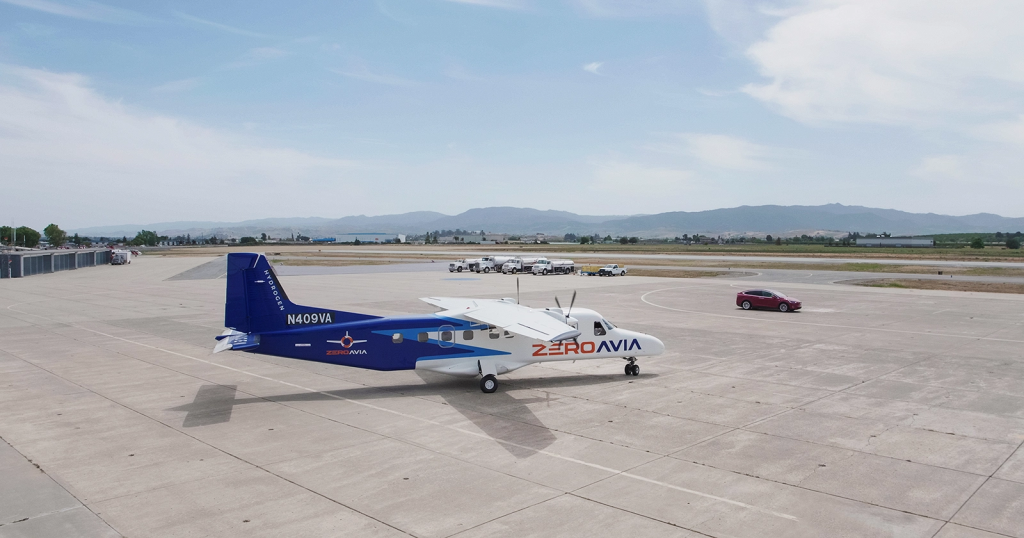ZeroAviva is currently working on a 2.5-MW powertrain that is designed for aircraft with 40-80 seats and a projection of 1,150 miles to be launched in 2026
The world is steadily moving towards carbon neutrality and reducing greenhouse gas emissions through innovative breakthroughs and advancements in the clean energy sector. The 2015 Paris Agreement has led to several clean zero-emission mobility options. One such breakthrough in the aviation industry is ZeroAviva’s largest hydrogen-fueled aircraft which took its first test flight on January 19, 2023.
The UK-based startup, ZeroAviva flew the Dornier 228, a 19-seat passenger plane from the company’s research and development facility at Cotswold Airport in Gloucestershire, UK. The flight duration was 10 minutes and reached 2,000 ft. The aircraft successfully completed the taxi, take-off, a full pattern circuit, and landing. Dornier 228 is a twin-engined aircraft, with a hydrogen-electric powertrain on the left wing and a Honeywell TPE-331 stock engine on the right wing. Besides being the largest, it was also the heaviest aircraft, weighing 5,650 kg at takeoff, yet to fly with hydrogen-electric propulsion.
Within a month of securing the necessary permission for a test flight, the company created made the landmark flight. The company will soon file an application for certification in 2023 and is planning to secure commercial routes by 2025. As a part of their future plans, ZeroAviva is currently working on a 2.5-MW powertrain that is designed for aircraft with 40-80 seats and a projection of 1,150 miles to be launched in 2026.
It is a part of the ambitious and major R&D project, the HyFlyer II project, which is backed by the UK Government’s flagship ATI Programme. This program is on a mission to develop a 600kW powertrain to support 9-19 seat aircraft worldwide with zero-emission flight. While the first phase of the HyFlyer program focused on replacing conventional propeller aircraft piston engines with hydrogen fuel cells, the second stage concentrated on a certifiable hydrogen-electric powertrain.
Impressive investors on board the hydrogen-powered aircraft:
The project has garnered plenty of attention from investors already, as Alaska Air Group invested in ZeroAviva in 2021, to fulfill its target of achieving net-zero emissions by 2040. The company also received 35 million USD from United Airlines and raised another set of funds worth 30 million USD from both new and returning investors, including International Airlines Group (IAG).
In mid-July, the aviation company’s Series B funding stood at a total of $68 million, which will be used to get forty to eighty-seat planes into operation by 2026. IAG was also joined by Barclays’ Sustainable Impact Capital and Saudi Arabia’s city of the future: NEOM. Val Miftakhov, the founder and CEO of ZeroAviva said that the project not only benefits from the large investments, but also from the vast expertise and experience of each of the prominent investors.
The aviation industry is one of the largest polluters in the world. The success of ZeroAviva’s Dornier 228 is a landmark event in the history of the industry. A day before Dornier 228’s first flight, competitor Universal Hydrogen tweeted a video of its hydrogen-electric testbed—a 50-seat De Havilland Canada Dash 8-300 with a 1-megawatt fuel-cell system replacing the right-side turboprop. The video showed the company conducting the first propeller spin ahead of its planned first flight at Moses Lake, Washington. One can only hope that as technology advances coupled with the pressing need for climate change, soon the aviation sector will undergo a massive transformation led by hydrogen-fueled aircraft.
